Christmas Zambomba at Tablao Flamenco Albayzín on December 6
Christmas Zambomba Tablao Flamenco Albayzín
The history of flamenco zambras in Granada is deep and rich, dating back to the innovations of Antonio Torcuato “Cujón”, a prominent Romani from Ítrabo. It was he who, in a blacksmith shop in Plaza del Humilladero, conceived the idea of the first zambra. This precursor event gave way to the emblematic Zambra de los Amayas in Sacromonte, led by Captain Juan Amaya in the early 20th century.

Antonio Torcuato Martín “el Cujón”.
Drawing by F.Ramírez
The Cueva de los Amaya: History and Legacy of Flamenco Zambras in the Sacromonte of Granada
The history of flamenco zambras in Granada is rooted in the figure of Antonio Torcuato Martín, known as “El Cujón”, a gypsy born in the late nineteenth century in Ítrabo, Granada. A blacksmith by trade, El Cujón had his forge in the Plaza del Humilladero, where he not only worked metal but also turned part of his smithy into a space to organize gypsy dances. There he gathered prominent local artists and created the first Granada zambra, laying the foundations of Sacromonte flamenco.
The researcher Eduardo Molina Fajardo highlights El Cujón’s skill both with the guitar and in the cante jondo, expressing the anguish and passion of his gypsy race. Unfortunately, El Cujón’s zambra disappeared after a robbery that left him in ruins and forced him to lose his forge and the place where these meetings were held. Despite this, his legacy remains as one of the fundamental pillars of flamenco in Granada.

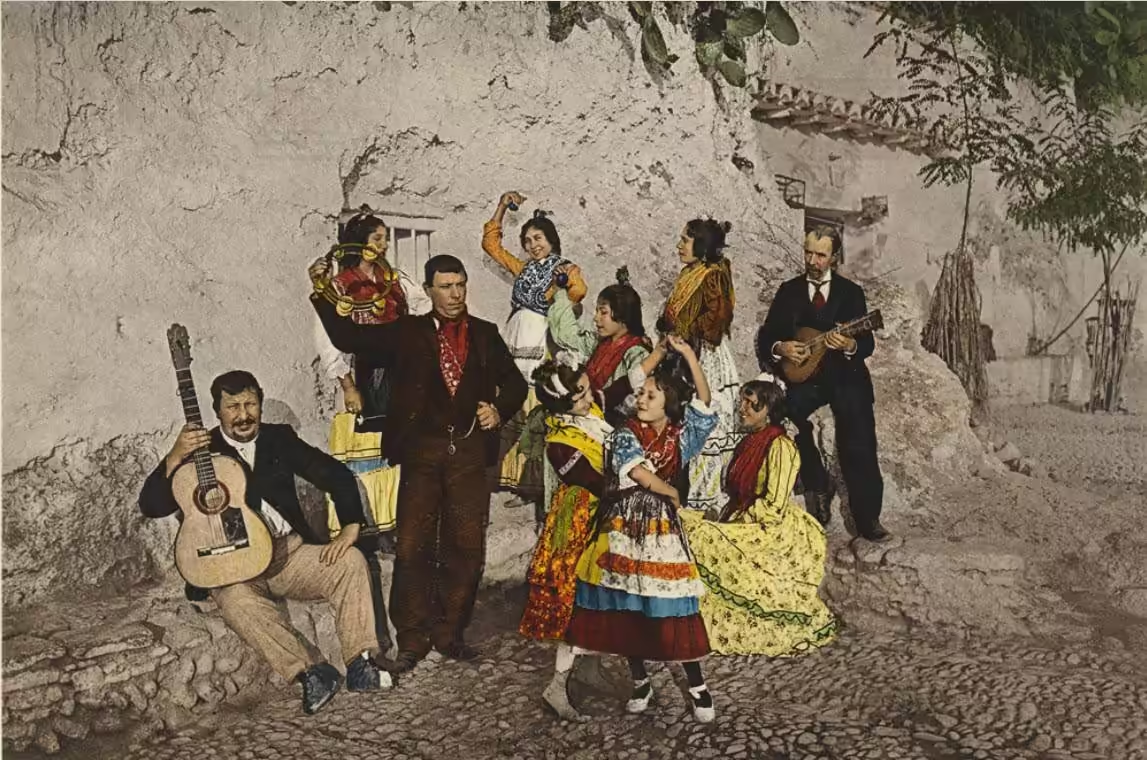
Juan Amaya (1861-1917) and his brother Pepe Amaya (1863-1919). With the bandurria Benito Ferrer (guitar maker).
The consolidation of the zambra in Sacromonte: Juan Amaya and the zambra de los Amayas
After the disappearance of El Cujón’s zambra, the flamenco tradition continued and was consolidated in Camino del Sacromonte, an area that became the heart of the Granada zambra.
One of the essential figures in this consolidation was Juan Amaya, captain of the emblematic Zambra de los Amayas in the early 20th century, along with his wife Dolores Hidalgo “La capitana” – The couple gave prestige to this zambra, establishing it as a fundamental reference in the Romani and flamenco culture of Sacromonte.
Manuel Amaya Hidalgo: The Soul of the Sacromonte Zambra
Manuel Amaya Hidalgo, born in 1904 in the Sacromonte of Granada and deceased in 1977, grew up in an environment where flamenco was part of daily life. Son of Juan Amaya “El moreno” and Dolores “La Capitana”, from a young age he began playing the guitar in the family zambra, acquiring a solid training in Romani flamenco and preparing to continue his family’s legacy.
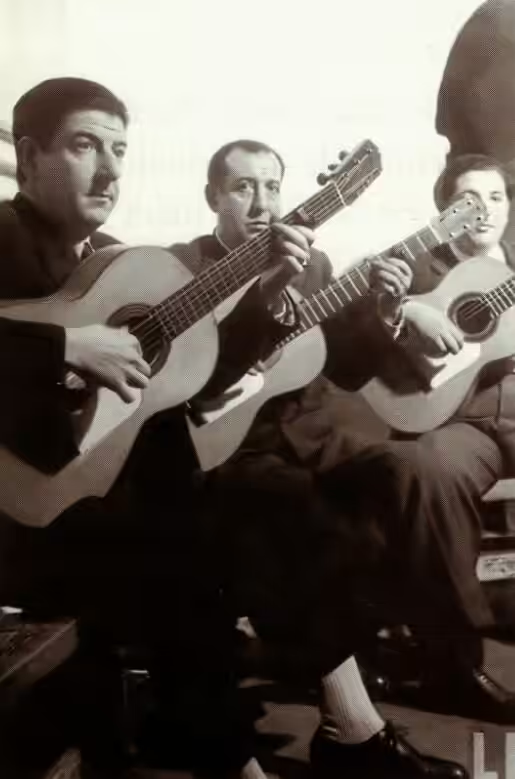

Manolo Amaya was recognized nationally and internationally. In 1929, he participated in the International Exposition of Barcelona, where his zambra won a silver cup, highlighting the quality and authenticity of his art.
In 1922, his zambra performed in the Concurso de Cante Jondo de Granada, an event organized by figures such as Manuel de Falla and Federico García Lorca, which was key to consolidating flamenco as a cultural expression.
Collaborations with Flamenco Greats
Throughout his career, Manolo Amaya collaborated with legendary figures such as Pepe Marchena, La Niña de los Peines, and Vallejo, expanding his style and spreading flamenco to new audiences.
International Tours and Global Projection
From a young age, Manolo toured Brazil, Buenos Aires, and other countries, taking the Romani zambra beyond Spanish borders. These tours consolidated his reputation as an ambassador of Granada flamenco and allowed the essence of the zambra to reach international audiences.
Participation in Festivals and Cinema
In 1952, he inaugurated with his zambra the First Festival of Music and Dance of Granada, held in the Placeta de los Aljibes. He also participated in festivals in emblematic places such as the Paseo de los Tristes and the Plaza de Toros.
In addition, Manolo Amaya ventured into cinema, appearing in films such as “María de la O” and “Forja de almas”, where his flamenco art reached new audiences.
Family and Living Legacy
Manolo Amaya was the father of Juan, Pepe, Paco, and Carmela, who also followed the path of flamenco. Cousin of great figures such as las Gazpachas, Trinidad la Bizca, and los Ovejillas, his family has been a pillar in the preservation of Romani flamenco from Sacromonte.
Posthumous Recognition
After his death in 1977, Manolo Amaya remained as one of the great references of Granada flamenco. His legacy endures as a source of inspiration for new generations.
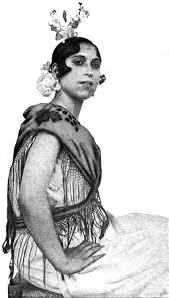
Photo of María la Gazpacha
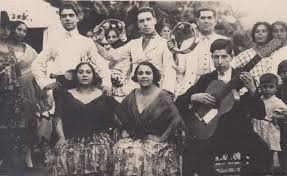
Juan Amaya (1861-1917) and his brother Pepe Amaya (1863-1919). With the bandurria Benito Ferrer (guitar maker).
Within this extended family, other artists stand out, such as:
In 2001, Sensi Amaya, a direct descendant of the prestigious Amaya family, made a momentous decision to preserve and revitalize the flamenco legacy of her lineage in Granada. Aware of the historical and cultural importance of her family, she decided to take over the “Reina Mora”, one of the oldest and most emblematic tablaos in the Albayzín neighborhood.
But Sensi not only preserved this space; she transformed it and renamed it “Tablao Flamenco Albayzín”, a place that fuses tradition with innovation. Under her direction, the tablao introduced a fresh and authentic program, which stood out both for its artistic quality and for its respect for the deep roots of flamenco. This blend of tradition and modernity allowed the tablao to quickly become a benchmark for locals and tourists, an intimate space where the essence of flamenco is lived with intensity and passion.
The unique atmosphere of the “Tablao Flamenco Albayzín”, inspired by the old zambras of Sacromonte, together with the regular presence of great contemporary artists, consolidated its prestige. Thanks to Sensi’s vision and dedication, the tablao not only honored the family heritage but also contributed significant cultural value to Granada, keeping the name of the Amayas alive in the national and international flamenco scene.
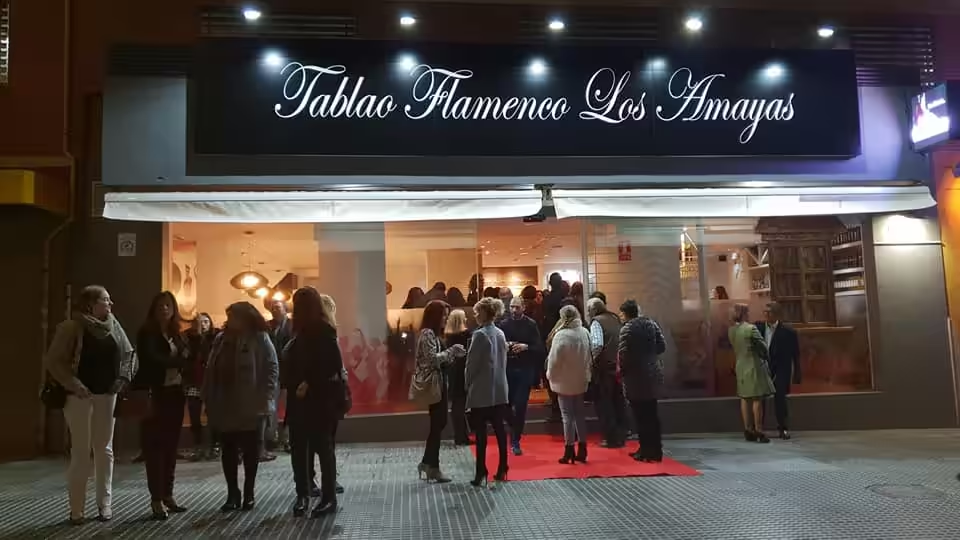
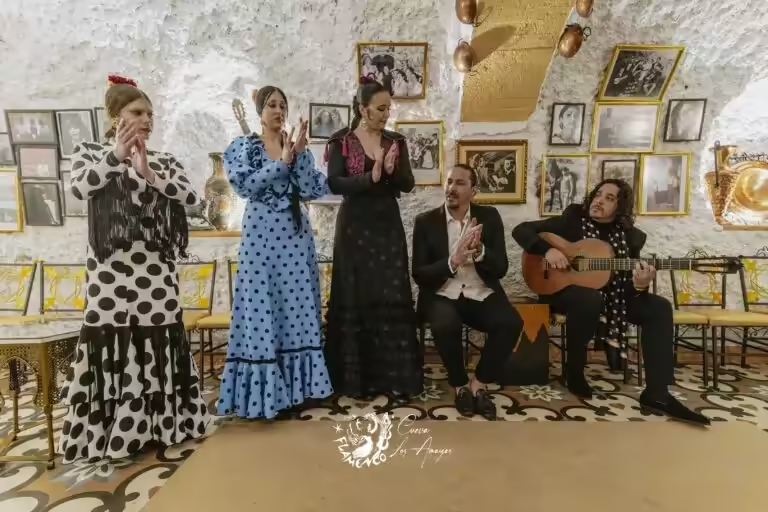

The Expansion of the Legacy: Tablao Los Amayas in Málaga
The passion for flamenco and the preservation of family heritage did not stop in Granada. In 2017, Sensi Amaya expanded her project by acquiring a 19th-century palace in Málaga, which she inaugurated under the name “Tablao Los Amayas”. This new space was conceived as a tribute to the great Pablo Picasso, fusing art, history, and flamenco in an immersive and genuine experience for fans.
The “Tablao Los Amayas” became a point of reference for those seeking an authentic approach to flamenco, reflecting the same philosophy that Sensi had implemented in Granada: keeping the tradition alive with a contemporary touch, respecting the roots and soul of this art.
José and Manuel Amaya: The Rebirth of the Cueva de los Amayas
In 2024, the history of the Amayas took another step with the entry of the next generation. José and Manuel Amaya, sons and continuers of the flamenco lineage, decided to return to their origins and reopen the historic Cueva de los Amayas, located in the heart of Sacromonte, one of the most vibrant and emblematic epicenters of Granada flamenco.
Aware of the symbolic and cultural value of this space, José and Manuel chose to preserve the purity and original essence of flamenco. Unlike modern trends that opt for elaborate stages and electronic amplification, they chose a traditional approach. In the Cueva, the cante jondo, the guitar, and the taconeo are heard without amplification or artifice, allowing the natural sound to flood every corner and connect directly with the public.
This return to the roots generates a unique atmosphere of intimacy and complicity between artists and spectators, where each note and each gesture take on a special force. The experience is not just a show but a collective and emotional experience that renews the traditional Granada zambra and attracts both longtime fans and new audiences eager for authenticity.
A Commitment to Living Flamenco
José and Manuel, who are now in charge of managing the Cueva de los Amayas, have revitalized not only an emblematic place but also the spirit and mission of their family. Their work reaffirms the commitment of the Amayas to the generational transmission of flamenco in its most genuine and unadorned form.
Each performance in the Cueva is a living testimony to the history of flamenco, where tradition and emotion intertwine to inspire new generations. Thus, the legacy of the Amayas continues to grow and leave an indelible mark on the flamenco culture of Granada, Spain, and the world.